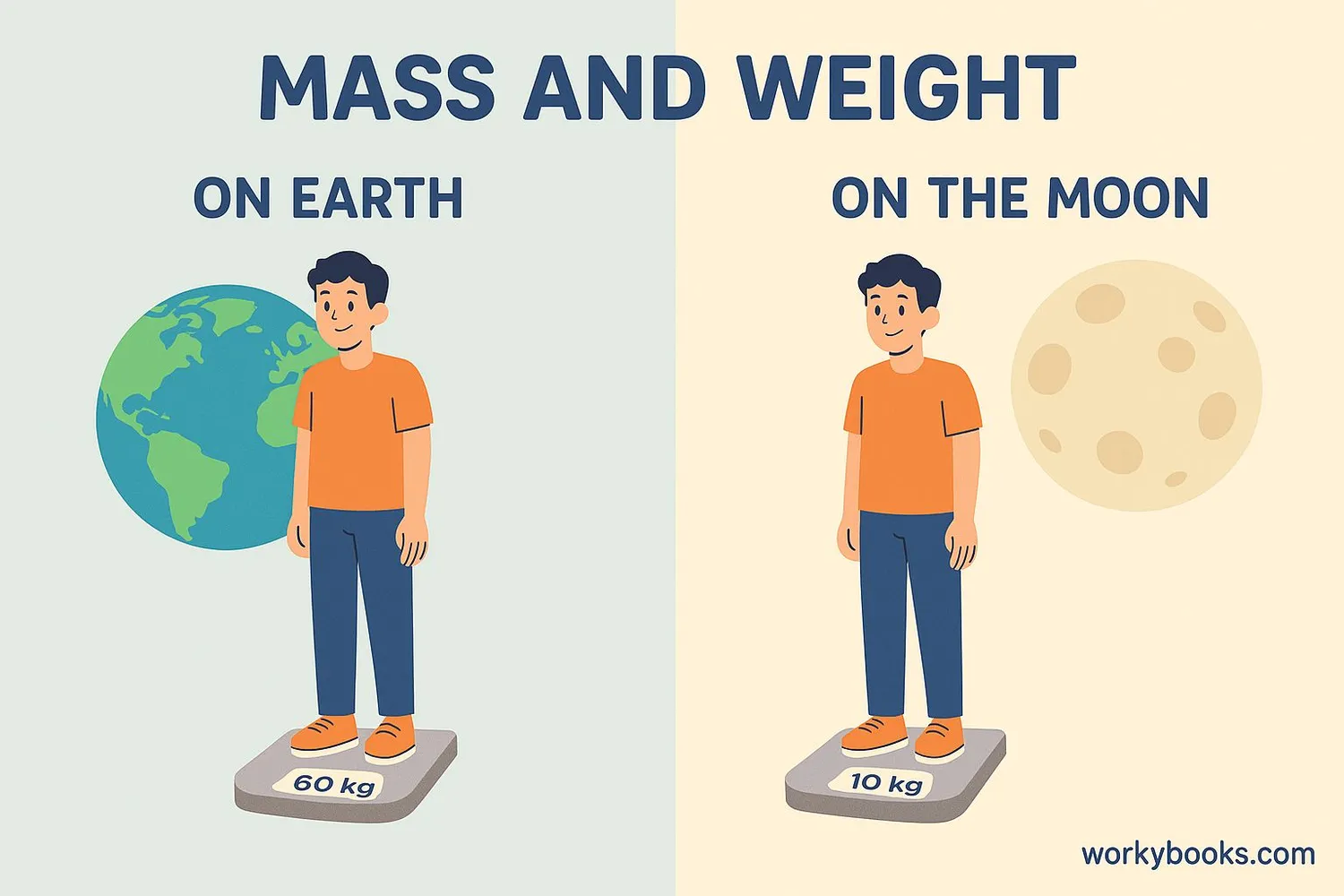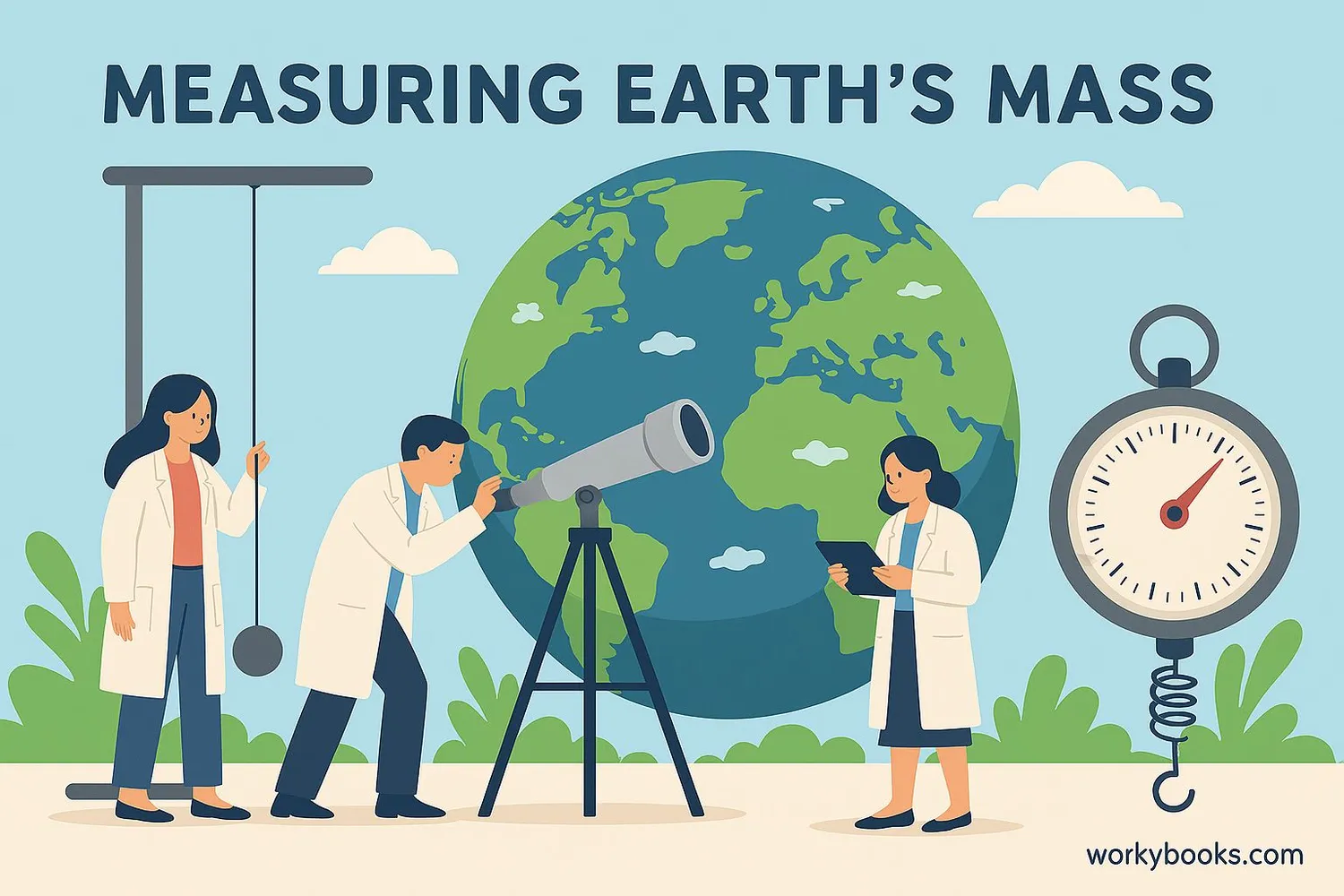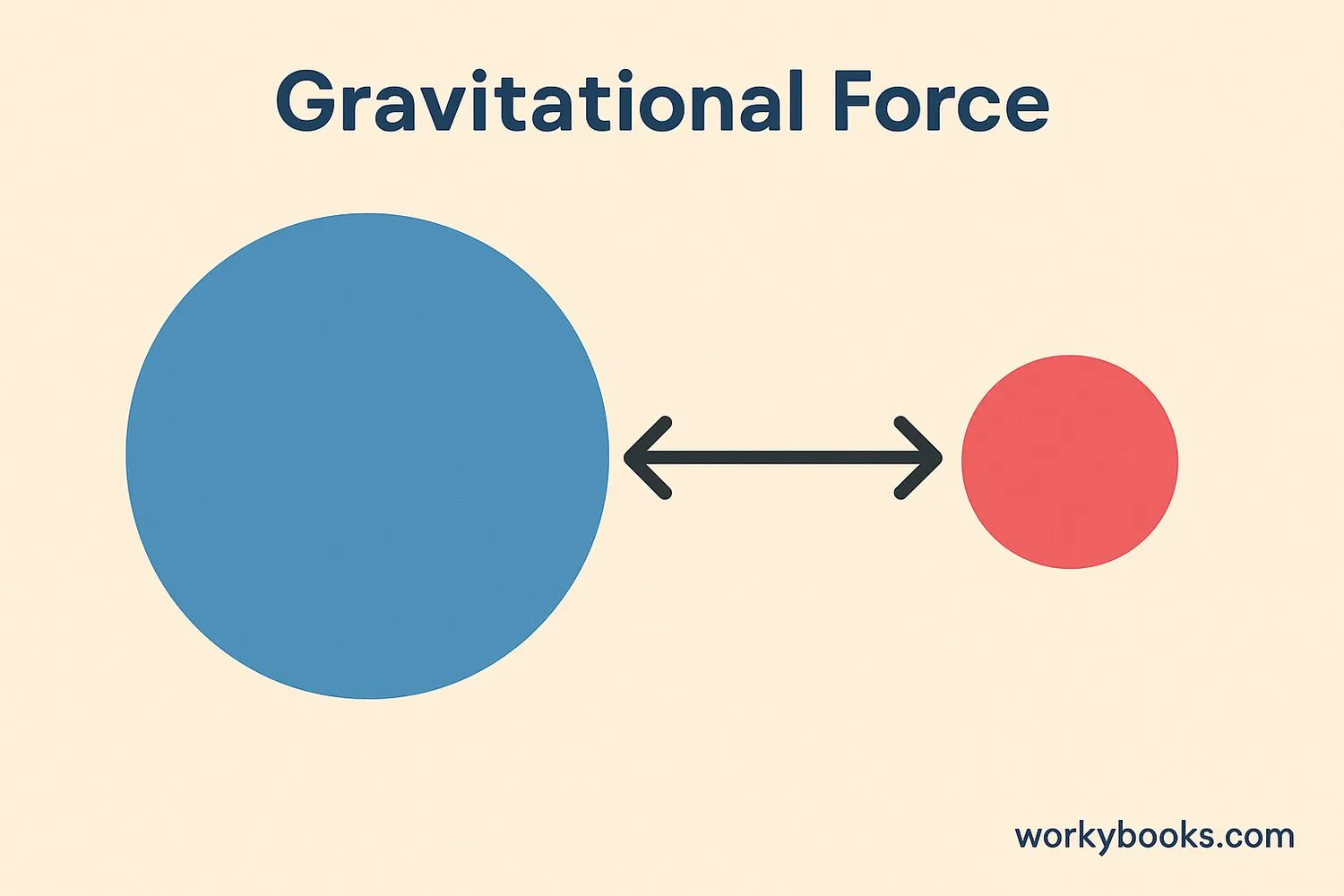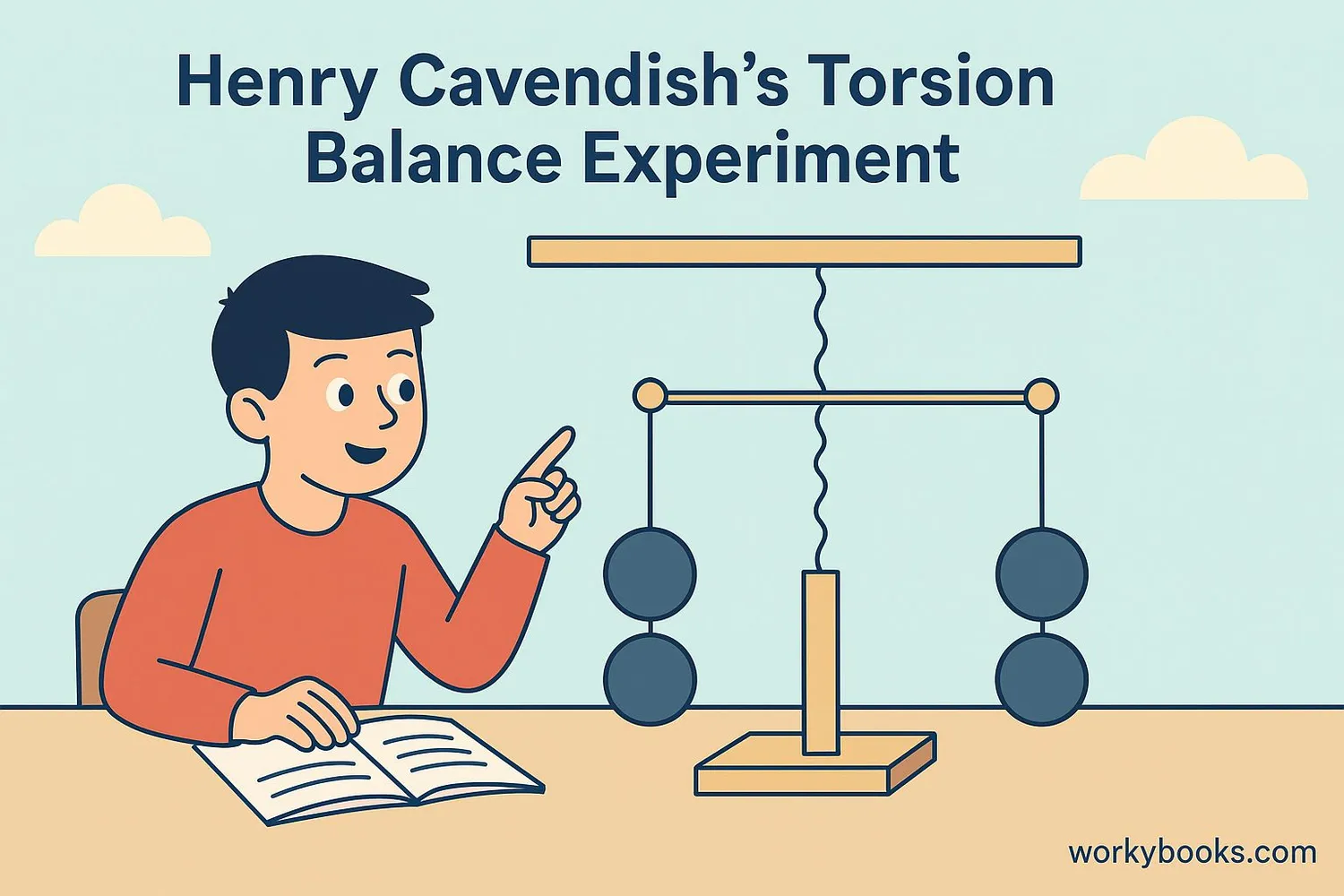Mass of the Earth - Definition, Examples, Quiz, FAQ, Trivia
Discover how scientists measure Earth's incredible mass
Mass vs. Weight

Mass is the amount of matter in an object, while weight is the force of gravity acting on that mass.
Think of mass as "how much stuff" is inside something. Your mass would be the same on Earth, the Moon, or floating in space. Weight is different - it depends on gravity. On Earth, gravity pulls on your mass to create your weight. On the Moon, where gravity is weaker, you'd weigh less even though your mass hasn't changed!
Science Fact!
Earth's mass is approximately 5.972 × 10²⁴ kilograms. That's 5,972 followed by 21 zeros!
Measuring Earth's Mass

You might wonder: "How do we weigh something as huge as Earth?" We can't put it on a scale! Instead, scientists use the power of physics and gravity to calculate Earth's mass.
Here's how it works:
Newton's Insight
Isaac Newton discovered the laws of gravity and motion
Gravitational Force
Earth's gravity pulls objects toward its center
Mathematical Formula
F = G × (m₁ × m₂) / r² relates gravity to mass
Measure Gravity
Scientists measure Earth's gravitational pull
Calculate Mass
Plug values into the formula to find Earth's mass
The key to this calculation is the gravitational constant (G), which scientists determined through careful experiments like the famous Cavendish experiment.
Gravity and Mass

Gravity is the invisible force that pulls objects toward each other. The strength of gravity depends on two things:
1. Mass: Objects with more mass have stronger gravity
2. Distance: Gravity weakens as objects move apart
Isaac Newton discovered that every object in the universe attracts every other object with a force that depends on their masses and the distance between them. This is called the law of universal gravitation.
Gravity Fact!
Earth's gravity is what keeps you on the ground, holds our atmosphere in place, and keeps the Moon orbiting around us!
The Cavendish Experiment

In 1798, scientist Henry Cavendish performed a groundbreaking experiment to measure Earth's mass. He used a device called a torsion balance to measure the gravitational attraction between lead balls.
How it worked:
Torsion Balance
A horizontal bar with small lead balls hung from a wire
Large Weights
Two large lead weights placed near the small balls
Gravitational Twist
Gravity pulled the small balls toward the large weights
By measuring how much the wire twisted, Cavendish could calculate the gravitational constant (G). With this value, he became the first person to "weigh" Earth! His calculation was remarkably accurate - only about 1% different from today's measurements.
Earth's Mass Quiz
Test your knowledge about Earth's mass with this quiz! Answer all 5 questions to see how much you've learned.
Frequently Asked Questions
Here are answers to some common questions about Earth's mass:
Amazing Earth Trivia
Discover some fascinating facts about Earth's mass and gravity:
Massive Numbers
Earth's mass is 5.972 sextillion metric tons! That's 5,972,000,000,000,000,000,000 tons - a number so large we write it as 5.972 × 10²⁴ kg.
Newton's Apple
The story of Newton discovering gravity when an apple fell on his head might be exaggerated, but his work on gravity revolutionized how we understand Earth's mass.
Gravity Map
NASA's GRACE satellites measure tiny changes in Earth's gravity field, helping scientists understand how mass is distributed inside Earth and how it changes over time.
Cavendish's Precision
Henry Cavendish's 1798 experiment was so precise that it took over 100 years for scientists to improve on his measurement of Earth's density.


